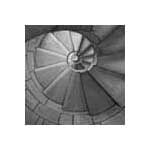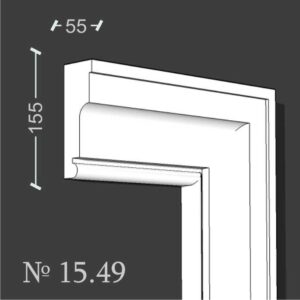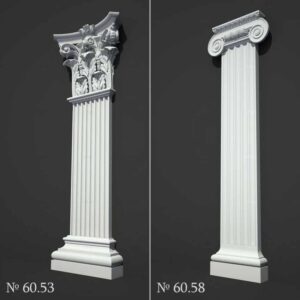Upon seeing a building’s façade, guests are left with a lasting impression. Whether a customer or a family member is entering your building, you need to instil trust in them with a stunning, spotless, well-maintained external render. On the other hand, since you own or are connected to that building, having a poorly kept render with dark stains dominating the rendering and algae development spreading will reflect negatively on you. For this reason, our team has created a blog post that covers all the information you require to understand the importance of render cleaning in Melbourne.
What is Render Cleaning?
If your render is in poor condition, you have two options: repainting or cleaning. Each has advantages, but cleaning is better if you’re searching for a cheaper solution. While there are various methods for cleaning renderings, we suggest gentle washing, which is applying chemicals to rendered surfaces to eliminate stains, algae, and other imperfections. You can keep the render in optimal shape and stop additional damage by thoroughly cleaning it. A property can be transformed, and cleaning your render might have several advantages. Commercial render cleaning can assist you as a business owner in improving your brand image and appearing more professional to prospective clients who approach your building.
Reasons for Render Stains
Two variables contribute to stains on render: either organic or atmospheric influences.
1. Organic Staining
Homes are usually susceptible to algae, moss, and mould growth. This is mainly because it creates the ideal damp conditions, allowing mould to proliferate through buildings’ renderings and become extremely difficult to eradicate independently.
2. Atmospheric Staining
Buildings are more likely to accumulate dirt on their outside surface since they are frequently situated near roadways and in populated cities and towns. Even though the collected dirt won’t show up as quickly as an organic development, the render will begin to fade, mainly if lighter colours are used in the render.
How to Clean Renders?
You must keep an eye on and clean your property’s render at all times. However, this is one of the first things guests notice when they arrive at your property; you might not know exactly how to clean your render. Make sure there are no more problems with your building by doing a comprehensive health check before you begin cleaning your property render.
Although you can clean your render yourself, we advise hiring a team of pros to conduct the cleaning for you because they have a lot of tools and chemicals to expedite the process and provide a better end product. Naturally, we suggest using our services for your pressure cleaning in Canterbury, but if you want to do it on your own, we recommend that you:
- When the weather is nice, try to schedule your cleaning because inclement weather might make cleaning more difficult.
- Ensure that all windows and doors are shut and that kids and dogs are kept at a safe distance from your work area and will stay away during the cleaning process.
- Remember that all the water you use to clean your outside surfaces must go somewhere, so make sure all drains are cleared and the drainage channel is clear.
- Ensure you have enough sight and wet weather protection unless it’s hot outside.
- Be exceedingly cautious when working at heights, whether climbing a stepladder, using a cherry picker, or a scaffold tower.
- If you plan to use a pressure washer, start with a small area at ground level to be sure the pressure washer’s strength won’t harm the surface of your render.
What are The Different Types of Render?
Given the variety of render types available, it might be challenging to determine the best render cleaning in Melbourne technique to clean each render type. Here is a list of several render types:
1. Cement Render – The typical or traditional render used on walls in outdoor spaces is cement cladding. Older homes employ these traditional pebbledash patterns.
2. Silicon Render – This render has lime or white cement as its basis and is usually sold in plastic containers. Polymer-containing chemicals and other plastic sources have been introduced to make these renderings less brittle.
3. Acrylic Render – They are frequently applied as thin layers to completed surfaces to provide colour and texture. Materials made of acrylic could potentially be used as a barrier.
4. Lime Render – lime plastering was the conventional technique for rendering houses, and as people remodel and expand traditional older homes, interest in the method has recently returned.
Why is it Necessary to Clean Renders?
There are several justifications for cleaning your render with pressure washing in Canterbury. Cleaning your render is essential for the general health of your building and to impress any potential guests to your residential or business space. Cracks and other little issues can be hidden by your render, which could later cause more severe cases. Even though some renders advertise themselves as maintenance-free, proper maintenance can extend the life of these renders and avert additional problems.
ABS Cleaning: Melbourne’s Best Render Cleaning Team
Render cleaning is critical to the longevity and integrity of building exteriors, and its importance goes beyond aesthetics. Frequent render cleaning protects against possible structural problems brought on by dirt, contaminants, and biological growth, in addition to maintaining the render’s aesthetic attractiveness. Render deterioration and expensive repairs may result from neglecting its cleaning. Expert cleaning services maintain overall curb attractiveness, protect property investments, and foster a healthier atmosphere. Property owners must acknowledge rendering cleaning as a crucial maintenance procedure that enhances a building’s long-term resilience against environmental influences and its aesthetic appeal.













